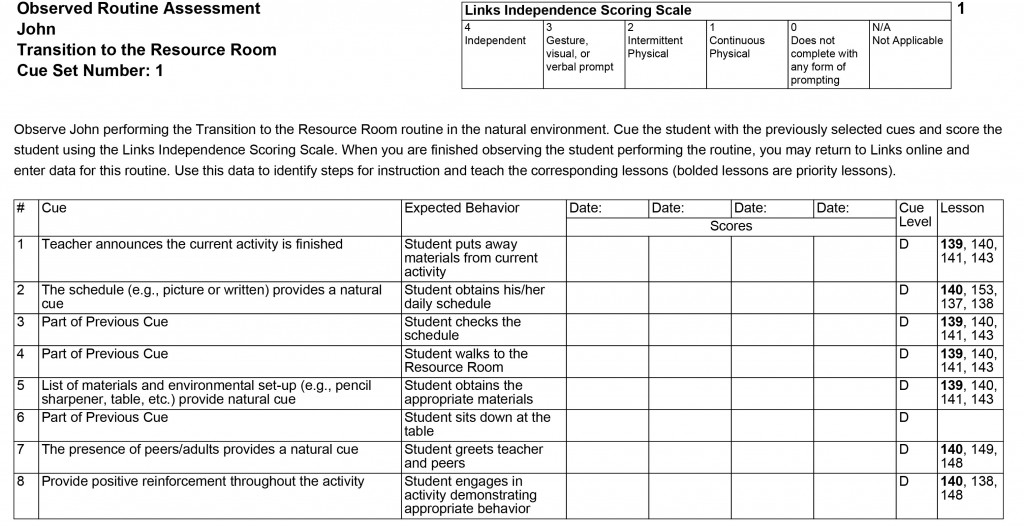Transitioning Between Activities
The key to teaching independence to students with disabilities is having consistent, predictable routines. Students will require less adult assistance to complete daily activities when they are able to predict what is coming next. One way to accomplish consistency and predictability within routines/activities is to have a task analysis that lists the individual steps that make up that particular routine. A common routine facing secondary students is transitioning between classrooms.

This is an example of the “Transition to Resource Room” routine. Click the image above to download the task-analysis and begin assessing your student. Each step of the routine is separated into 2 parts: the cue and the expected student response. Two things to note about this routine:
1. The “cues” listed in the above example are all written as “natural cues.” The cue is the information provided to the student prior to the expected behavior. Using the natural cue is always the goal for all students. However, you may elect to provide additional support in the form of instructional cues if your student is not yet able to follow the natural cue.
2. This routine can be modified (if necessary) to reflect transitions to other locations and activities.
Another way to accomplish consistency and predictability within routines/activities is to provide visual supports. Visuals (i.e., words, photographs, line drawings, etc.) convey important information to students about expected behaviors.
Here is an example of a visual sequence strip for the transition routine outlined above. Click here to download a printable version.
If you are an OrPATS classroom and have access to the Links Curriculum, don’t forget to set up similar routines for your students using your Links subscription. If you attended a Links workshop in the past 12 months, your account continues to be active. Click here to sign-in! Contact Jennie Willis with any questions at [email protected] or 503-297-2864.
